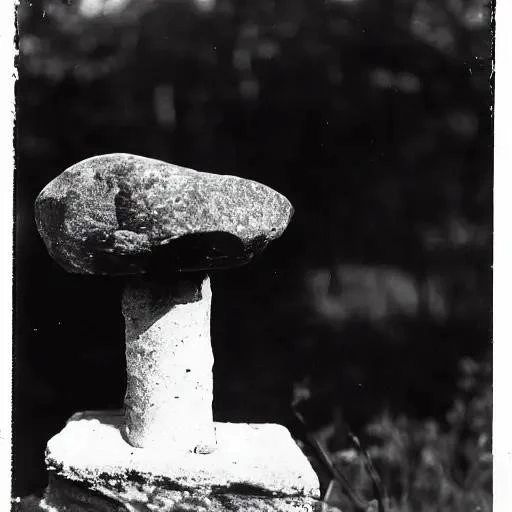
Have you ever found yourself reading through an ancient text‚ perhaps even the Bible‚ and stumbled upon terms like “shekels of silver” or “talents of gold‚” only to scratch your head and wonder‚ “What on earth does that actually mean in today’s terms?” It’s a common experience‚ isn’t it? For us‚ money is usually counted in crisp bills or digital transfers‚ but in biblical times‚ things were far more tactile and‚ dare I say‚ a little more fluid. Understanding the Biblical Unit Of Weight And Money isn’t just a historical curiosity; it’s a fascinating journey into the very fabric of ancient economies‚ legal systems‚ and even daily life. So‚ let’s dive in and demystify these ancient measures together!
Imagine a world before coins‚ before the satisfying jingle of change in your pocket. How did people buy and sell? How did they establish value? It’s a fundamental question that takes us back to the very roots of commerce. In the ancient Near East‚ and certainly within biblical narratives‚ the answer was often quite simple: by weight. Precious metals like silver and gold weren’t just shiny objects; they were the currency‚ and their value was determined by how much they weighed. This practice led to a unique system where terms for weight became synonymous with terms for money.
Before Coins: Weight as Biblical Unit Of Weight And Money
Before the first standardized coins began to circulate‚ perhaps around 680-630 BC‚ transactions were a bit more involved. You wouldn’t just hand over a coin; you’d bring out your scales! Imagine a merchant carefully weighing out pieces of silver or gold to complete a purchase. This wasn’t just a practical necessity; it was deeply ingrained in the ethical and legal fabric of society. The Bible itself emphasizes the importance of honest weights and measures‚ warning against deceitful practices. It really makes you think about the trust and precision required in every single exchange‚ doesn’t it?
Interesting Tip: Many modern Bible translations‚ like the Contemporary English Version (CEV)‚ often translate these ancient weights into more understandable terms like “pieces of silver” rather than converting them to modern metric weights. This helps preserve the original context and impact for the reader!
So‚ when you read about Abraham buying the cave of Machpelah for 400 shekels of silver‚ he wasn’t just counting coins; he was likely weighing out a specific amount of silver. It was a tangible‚ physical exchange that relied heavily on the integrity of the scales and the individuals involved. This system laid the groundwork for all future Biblical Unit Of Weight And Money concepts.
Decoding Specific Biblical Unit Of Weight And Money
The Bible mentions several key units that functioned as both weights and monetary values. These terms might sound exotic to our ears‚ but they were the everyday currency — or rather‚ the everyday weight-based currency — of ancient Israel. Understanding them helps us grasp the economic realities and social structures depicted in scripture. Let’s break down some of the most prominent ones.
From Shekel to Talent: Key Biblical Unit Of Weight And Money
The hierarchy of biblical weights and money moved from smaller‚ everyday units to incredibly large‚ significant sums. Here’s a quick rundown of the most common ones:
- Gerah: This was the smallest unit‚ often considered a fraction of a shekel. Think of it as a tiny increment‚ crucial for precise weighing.
- Beka: Equivalent to half a shekel. Interestingly‚ a rare beka weight was recently unearthed in Jerusalem‚ likely used for the half-shekel temple tax!
- Shekel: Perhaps the most famous Biblical Unit Of Weight And Money. A shekel of silver or gold was a standard measure‚ roughly equivalent to 11.4 grams (or about 0.4 ounces). It could represent a day’s wage for some‚ or a significant purchase.
- Mina: A larger unit‚ typically consisting of 50 or 60 shekels. This would have been used for more substantial transactions. One mina was approximately 571 grams (or about 1.25 pounds).
- Talent: The largest and most substantial unit‚ a true fortune! A talent was usually 3‚000 shekels or 60 minas. Its weight varied but was generally between 35 to 45 kilograms (or 75 to 100 pounds). Imagine carrying that around!
These values are approximate‚ of course‚ as they could vary slightly by era and location. But they give us a powerful sense of scale. When you read about a servant owing his master ten thousand talents (Matthew 18:24)‚ you realize the staggering‚ almost impossible‚ debt he faced. It wasn’t just a big number; it was an unimaginable weight of precious metal.
Did You Know? The term “denarius” (a Roman coin) is often mentioned in the New Testament. It represented a day’s wage for a common laborer‚ giving us a clear benchmark for daily income during that period. This was a coin‚ not just a weight!
New Testament Shifts: Counting Coins‚ Not Just Weighing Biblical Unit Of Weight And Money
By the time of the New Testament‚ the economic landscape had evolved considerably; While the concept of weight-based value still existed‚ the widespread minting of coins meant that transactions often involved counting specific denominations rather than weighing out raw metal. The Roman denarius‚ the Greek drachma‚ and other coins became common. This shift made everyday commerce much more convenient‚ but the underlying principles of value‚ often rooted in the weight of their metal content‚ remained.
The Enduring Legacy of Biblical Unit Of Weight And Money
It might seem like these ancient systems are just dusty relics of the past‚ but their influence stretches far beyond the pages of history books. The principles embedded in the Biblical Unit Of Weight And Money system continue to resonate‚ reminding us of timeless truths about fairness‚ value‚ and economic integrity. Why did the Hebrews care so much about exact weights and measures? Because they understood that a just society‚ a fair market‚ and even a righteous life depended on it.
Think about it: “You shall not have in your pouch alternate weights‚ larger and smaller.” (Deuteronomy 25:13). This isn’t just a dry legal code; it’s a passionate plea for honesty‚ a call to treat everyone equally in commerce. It highlights that money‚ at its core‚ is meant to be a reliable measure‚ a meaningful unit of account‚ and a dependable store of value. When those qualities are undermined‚ whether by ancient deceitful scales or modern inflationary policies‚ trust erodes‚ and society suffers. It’s a powerful lesson that transcends millennia‚ isn’t it?
Frequently Asked Questions About Biblical Unit Of Weight And Money
Q: Why were weights used as money in biblical times?
A: Before the invention of standardized coins‚ precious metals like silver and gold served as currency. Their value was determined by their weight‚ so people would literally weigh out amounts of metal (like shekels) to make purchases or pay debts. It was a practical solution in a pre-coinage economy.
Q: What’s the difference between a shekel of weight and a shekel of money?
A: In many biblical contexts‚ there wasn’t a distinct difference! A “shekel of silver” referred to a specific weight of silver‚ which then functioned as a monetary unit. Over time‚ the term “shekel” also came to denote a coin of that particular weight‚ especially once coinage became more common.
Q: How much was a talent in today’s money?
A: Converting ancient values to modern currency is incredibly complex and often misleading due to varying purchasing power‚ economic conditions‚ and the value of precious metals. However‚ a talent of silver or gold was an immense fortune‚ weighing between 35-45 kilograms (75-100 pounds). Its value would be in the hundreds of thousands‚ if not millions‚ of modern dollars‚ depending on the metal and current market prices.
Q: Did all biblical measurements stay the same throughout history?
A: No‚ not exactly. While core units remained‚ specific values could vary slightly by different eras and geographical locations within the ancient world. Archeological finds often reveal slight variations in weights from different periods‚ indicating a dynamic system rather than a perfectly static one.
Q: Why is it important to understand biblical weights and money today?
A: Understanding these units enriches our reading of the Bible‚ giving us a clearer picture of the economic realities‚ the scale of wealth or poverty‚ and the cultural context of various narratives. It also highlights timeless ethical principles about fairness‚ honesty‚ and the nature of value in commerce‚ which are still relevant today.






